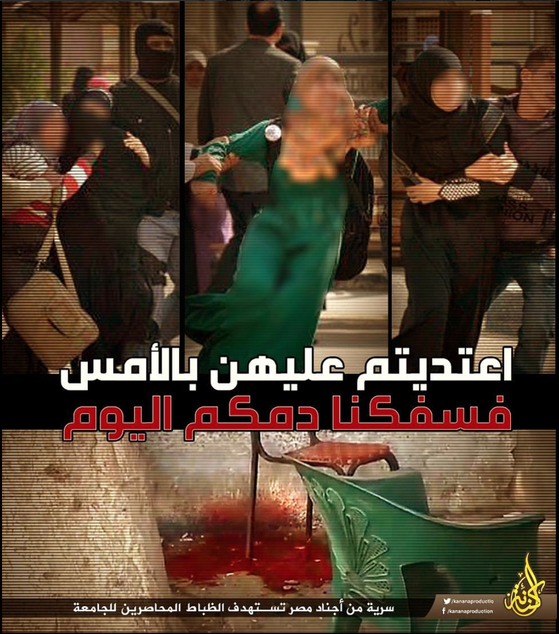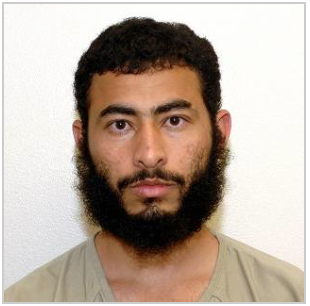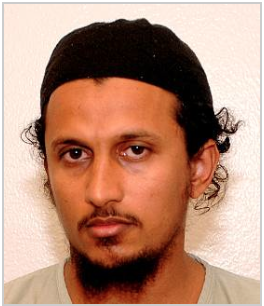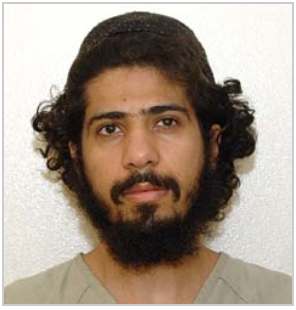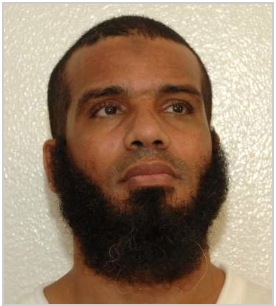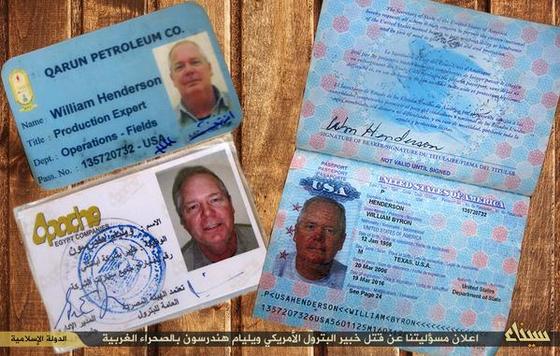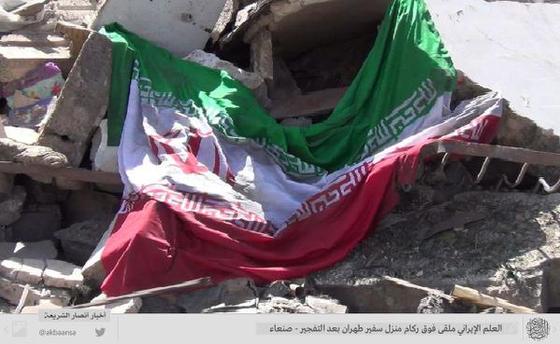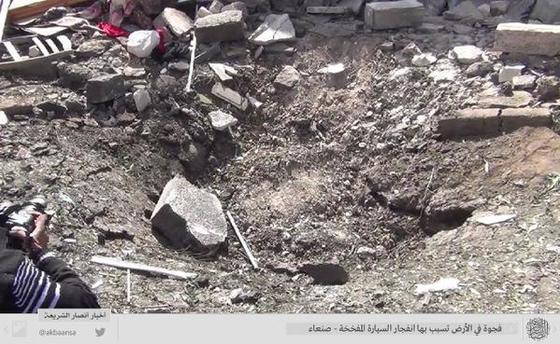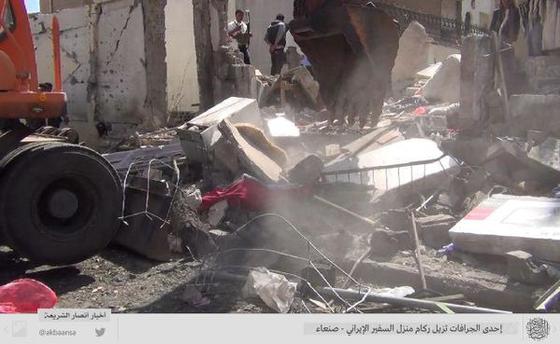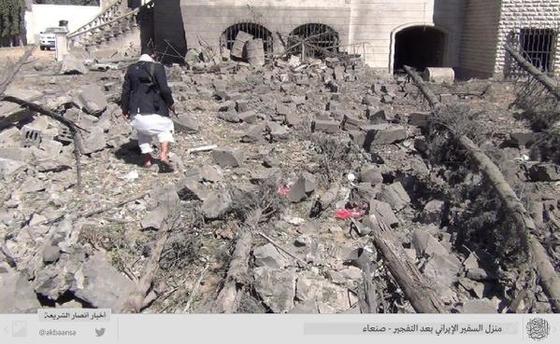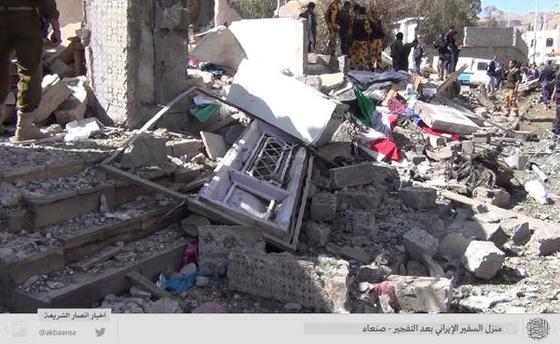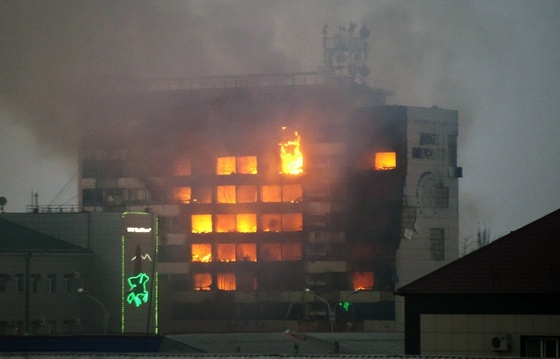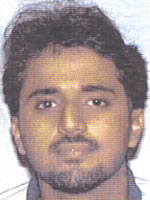![Screen Shot 2014-11-21 at 9.36.48 AM.png]()
Al Qaeda in the Arabian Peninsula (AQAP), an official branch of al Qaeda, has released a video rejecting the Islamic State's announced caliphate and chastising the group for sowing discord among jihadists.
The newly-released video stars Harith bin Ghazi al Nadhari, a senior AQAP sharia official, who responds directly to a Nov. 13 speech made by Abu Bakr al Baghdadi, the head of the Islamic State. The video is titled, "A Statement about What was Contained in the Speech of Sheikh Abu Bakr al Baghdadi 'Even If the Disbelievers Despise Such'," and was first translated by the SITE Intelligence Group.
In addition to rebuking Baghdadi and the Islamic State, Nadhari also renews AQAP's bayat (oath of allegiance) to al Qaeda emir Ayman al Zawahiri, and affirms Zawahiri's oath to Taliban chieftain Mullah Omar. Nadhari says "it is known" that al Qaeda "has had a pledge of allegiance to Mullah Omar...for nearly twenty years."
Al Qaeda has previously countered Baghdadi's claim to rule as "Caliph Ibrahim I" by implying that Omar is the rightful caliph and, unlike Baghdadi, has the broad support of recognized jihadist authorities.
Nadhari begins by saying that AQAP "did not want to talk about the current dispute and the fitna [sedition]" in Syria given that the jihadists are in a "sensitive stage in which the enemies of Islam" have "gathered together to fight" the entire Islamic ummah [worldwide community of Muslims].
"This war was and still is a Crusader war against all the honest mujahideen," Nadhari says, according to SITE's translation. "We took the position incumbent upon us to support our brothers with what we can, and we still hold to that position, as we believe in the necessity to support our mujahideen brothers, including all of their groups and entities, regardless of their inclinations."
However, according to Nadhari, the Islamic State has made it impossible to remain silent.
Direct response to Abu Bakr al Baghdadi
During his Nov. 13 speech, Baghdadi accepted the oaths of allegiance sworn by jihadists in Algeria, the Sinai in Egypt, Libya, Saudi Arabia and Yemen. The oaths were clearly coordinated by the Islamic State to show international support for its caliphate project.
Baghdadi announced "the nullification" of all other jihadist groups in these countries. And he said that his jihadists had created "new wilayah [provinces] for the Islamic State" in each nation, with new provincial leaders to be appointed soon. Baghdadi said that all jihadists, and indeed all Muslims, now owe his official representatives their loyalty.
Baghdadi's speech was clearly a shot across AQAP's bow, as two of the oaths of loyalty came from anonymous jihadists in Saudi Arabia and Yemen -- that is, AQAP's turf. The logical implication is that AQAP has no real authority given that the caliphate has supposedly spread to its lands.
Nadhari counters by saying that Baghdadi's caliphate is not a widely accepted authority and was not established in an appropriate manner. "The announcement of the caliphate for all Muslims by our brothers in the Islamic State did not meet the required conditions," Nadhari says. "It did not go through consultation with the influential people of the Islamic Ummah, or at least through some of them from among the faithful scholars and leaders of the mujahid groups," or "others from among those who are well-qualified for consultation in the Islamic Ummah."
Al Qaeda and its official branches have made this argument before, pointing out that because Baghdadi's right to rule has not been blessed by recognized authorities, he is not really the caliph.
Nadhari stresses that al Qaeda is not opposed to establishing a caliphate. It is the "highest of our wishes" and "we strive to fulfill this establishment," he says. But Baghdadi's organization falls well short of al Qaeda's desired new empire.
AQAP's ideologue goes on to blame Baghdadi and the Islamic State for sowing dissent among jihadists far from their base of operations in Iraq and Syria. Their caliphate announcement in late June was particularly divisive. The "policy of our brothers in the Islamic State split the ranks of the mujahideen, and scattered them, in this sensitive phase in the history of the mujahid ummah," Nadhari argues. "This is one of the absolutely forbidden matters in the religion of Allah."
The Islamic State's caliphate announcement transferred "the infighting and sedition to other fronts" as they demanded that all Muslims now bow before Baghdadi. All Muslims who fail to do so are "deemed" by the Islamic State to be "sinners," Nadhari says.
"They added to that, cancelling the legitimacy of all of the groups that work for Islam in the Muslim world, whether jihadi or preaching, and they strove to split the ranks of the mujahideen by collecting pledges from within the mujahid groups," Nadhari continues, according to SITE's translation.
Nadhari then directly criticizes the Islamic State's attempt to establish provinces in several nations. The Islamic State's "false implants," which were "adopted since the announcement of the caliphate," are "cleaving the ranks of jihad throughout the Muslim world."
The Islamic State's leaders "announced the expansion of their caliphate in a number of countries in which they have no governance, and considered them to be provinces that belong to them, and they appointed governors in them, and canceled the jihadi groups in them that did not pledge allegiance to them," Nadhari says.
Later in the video, Nadhari adds that the Islamic State's "true" governance "should not exceed the geographical scope in which they control it in Iraq and Syria."
"As for the rest of the countries," Nadhari says, "they have no real entity, but just groups and individual fighters working to push away the assailing enemy." In other words, according to Nadhari, the Islamic State doesn't have a real organization outside of Iraq and Syria. The group cannot, therefore, claim to govern outside of these countries.
Nadhari blasts the Islamic State's caliphate project, saying AQAP holds "our brothers in the Islamic State responsible for all the consequences of these interpretations and dangerous steps, from weakening the strength of the mujahideen, which is an inevitable result of fighting."
"We make them bear responsibility" for "going too far in interpretations in terms of spilling inviolable [Muslim] blood under the excuse of expanding and spreading the power of the Islamic State," Nadhari says, according to SITE's translation.
Nadhari also fires back at Baghdadi for smearing AQAP's honor on the battlefield. Baghdadi alleged in his audio message earlier this month that Shiite Houthi rebels would not have been able to achieve the successes they've enjoyed in Yemen in recent months if real monotheists were present on the battlefield. In other words, Baghdadi's forces would not have allowed the Shiites to advance.
AQAP's sharia man says he and others "were hurt by what Sheikh Abu Bakr al Baghdadi said, and it hurt the Muslims in the trench of Yemen, when he said that the Houthis found no monotheists to fight them." This is false, Nadhari argues, and AQAP cannot believe "the likes of the Sheikh" would "say such a thing."
Still want peace among jihadists
Nadhari's video is al Qaeda's clearest condemnation of the Islamic State yet. Al Qaeda and its branches, including AQAP, have indirectly criticized Baghdadi's organization on multiple occasions. But more often than not, al Qaeda has attempted to preach unity among the jihadists.
It appears that Baghdadi's speech on Nov. 13, in which he made aggressive claims on territory far afield from his headquarters, finally prompted al Qaeda to condemn the Islamic State's caliphate in no uncertain terms. Ultimately, however, AQAP wants the jihadists to cease fighting one another.
Regardless of the Islamic State's transgressions, Nadhari stresses that AQAP just wants the infighting in Syria to end. Apparently reacting to press accounts saying the jihadists had stopped attacking one another, Nadhari says AQAP expresses "our utmost joy to having received good news about what we heard of signs of stopping the infighting among the mujahideen" in Syria. Nadhari wants the jihadists to push forward with these efforts.
Nadhari repeats al Qaeda's call for the jihadists to settle their differences in a common sharia court. The Islamic State has dismissed this proposal out of hand in the past.
And Nadhari attempts to keep the jihadists focused on the "Crusaders," warning that it is impermissible for anyone to work with them as they attack the jihadists in Iraq and Syria.
Renewed oaths of loyalty to Ayman al Zawahiri and Mullah Omar
Nadhari says that AQAP rejects the Islamic State's "calls to split the ranks of the jihadi groups" around the world, and rhetorically asks how such a move could possibly serve the jihadists' interests. With respect to Zawahiri and Omar, Nadhari says that AQAP sees no reason for it to break its "covenant" or contradict its "pledge."
"We confirm to our brothers our loyalty to the promises, and renew the pledge of allegiance to our Sheikh Ayman al Zawahiri, may Allah preserve him, and the pledge of allegiance from him to Mullah Omar Mujahid, may Allah preserve him," Nadhari says. This declaration is necessary given that the "campaigns of the enemy from among the apostates and Crusaders have intensified on all the fronts."
"We hoped our brothers in the Islamic State [would] support and help, but they surprised us with these interpretations that collapse in the same body and separate the people," Nadhari says.
And the AQAP official says that the Islamic State should retract its attempt to expand into other lands. "We call upon our brothers in the Islamic State to withdraw the fatwa in removing the groups and splitting the ranks, for it is an attack and is unjust and [will lead to] breaking of relationships that Allah does not approve for His worshipers," Nadhari counsels.
Judging by its history, the Islamic State is not inclined to listen.
